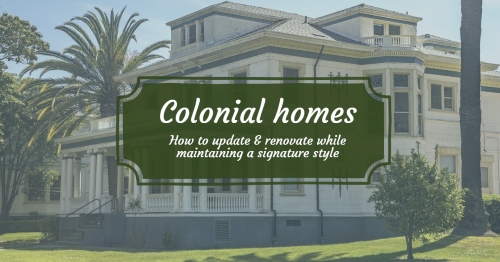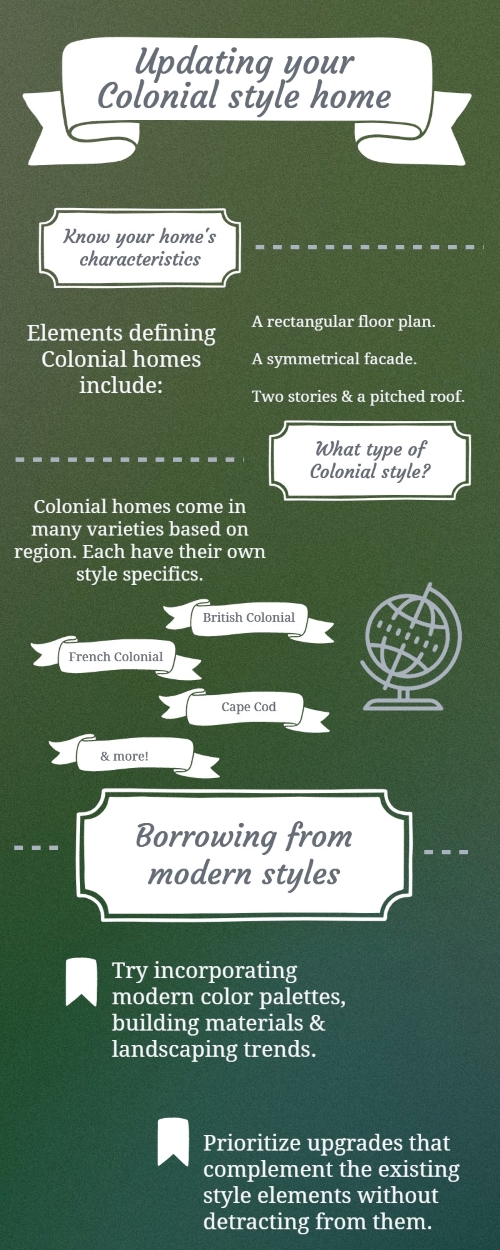
The Colonial-style house is one of the most common and well-known house styles in America. It’s traditional yet versatile enough to bring it to the modern age with little to no excessive efforts and can transcend regional boundaries due to its versatility.
But what do you do when it’s time to integrate the traditional styling elements of the Colonial home with a few newer, more modern design preferences?
Know what makes your home Colonial
Most Colonial houses are identifiable based on their shapes, overall external aesthetic and size. They tend to be rectangular around the body of the home with pitched, yet traditional roofs. Most have at least two stories, but can have one or three, depending on location and designer.
These homes often have fireplaces and favor the traditional exterior siding of brick or wood paneling. They’re also known for their symmetry and cosmetically conventional windows and doors.
Understand which style you have
Colonial homes come in a wide and astounding variety of styles. From the French Colonials dotting New Orleans, to the Cape Cod style of New England, Colonial homes have often been customized to feature a unique house style that sets them apart from others in their set.
Knowing what style of house you have is imperative for finding the right decor and design to accentuate its Colonial architecture.
Add from modern house styles
Many homeowners want to update their home’s exterior for a wide range of reasons. However, you’ll want to choose exterior accents that complement your home’s style instead of detract from it.
For example, those enjoying Spanish Colonial houses may find they can enjoy a home with lighter exteriors and darker accents along the home’s siding. The landscaping may even feature more tropical or desert-loving plants to help bring the style together.
If you want to update the siding of an old Spanish Colonial home, try using a siding with hefty yet sustainable features. Ensure you can match the textures associated with other facets of your home before you upgrade, to ensure one fluid style around your home’s exterior.

These are just a few basics regarding updates to your Colonial home. Be sure to give yourself enough time to consider and plan any upgrades to your home before you get started. It’ll save you a host of problems down the line and create a product that you and your household can enjoy.
About the Author

